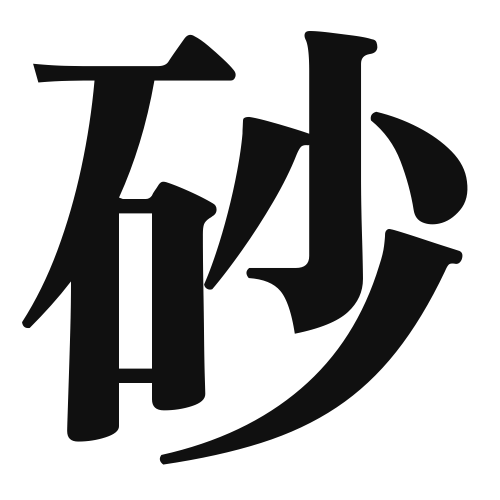1. Overview of Meaning
The kanji “砂” (pronounced “suna”) means “sand.” It refers to the small, granular particles that make up beaches, deserts, and other natural landscapes. Sand is often associated with relaxation, nature, and construction.
2. Formation and Radical
Formation of the Kanji: The kanji “砂” is a phonetic-ideographic character (形声文字). It combines the radical for “earth” (土) with the phonetic component “sha” (沙), which also relates to sand.
Radical: The radical of “砂” is 土, which means “earth” or “ground.” This radical indicates that the character is related to something found in nature.
3. Examples of Usage
Common Words and Phrases:
- 砂浜 (すなはま, sunahama) – sandy beach
- 砂糖 (さとう, satou) – sugar (literally “sand” + “sweet”)
Example Sentences in Daily Conversation:
- 海で砂遊びをしました。 (うみで すなあそびを しました。) – I played in the sand at the beach.
- この砂はとても細かいです。 (この すなは とても こまかいです。) – This sand is very fine.
4. Synonyms and Antonyms
Similar Kanji:
- 塵 (ちり, chiri) – dust; smaller particles than sand.
- 砂利 (じゃり, jari) – gravel; larger than sand but smaller than stones.
Antonyms:
- 水 (みず, mizu) – water; the opposite of sand in terms of texture and state.
5. Cultural and Historical Background
Relation to Japanese Culture: Sand is often associated with beaches and traditional Japanese gardens, where it symbolizes purity and tranquility. It is also used in various art forms, such as sand painting.
Proverbs and Idioms:
- 砂上の楼閣 (さじょうのろうかく, sajou no roukaku) – “A castle on sand”; refers to something that is unstable or not built on a solid foundation.
